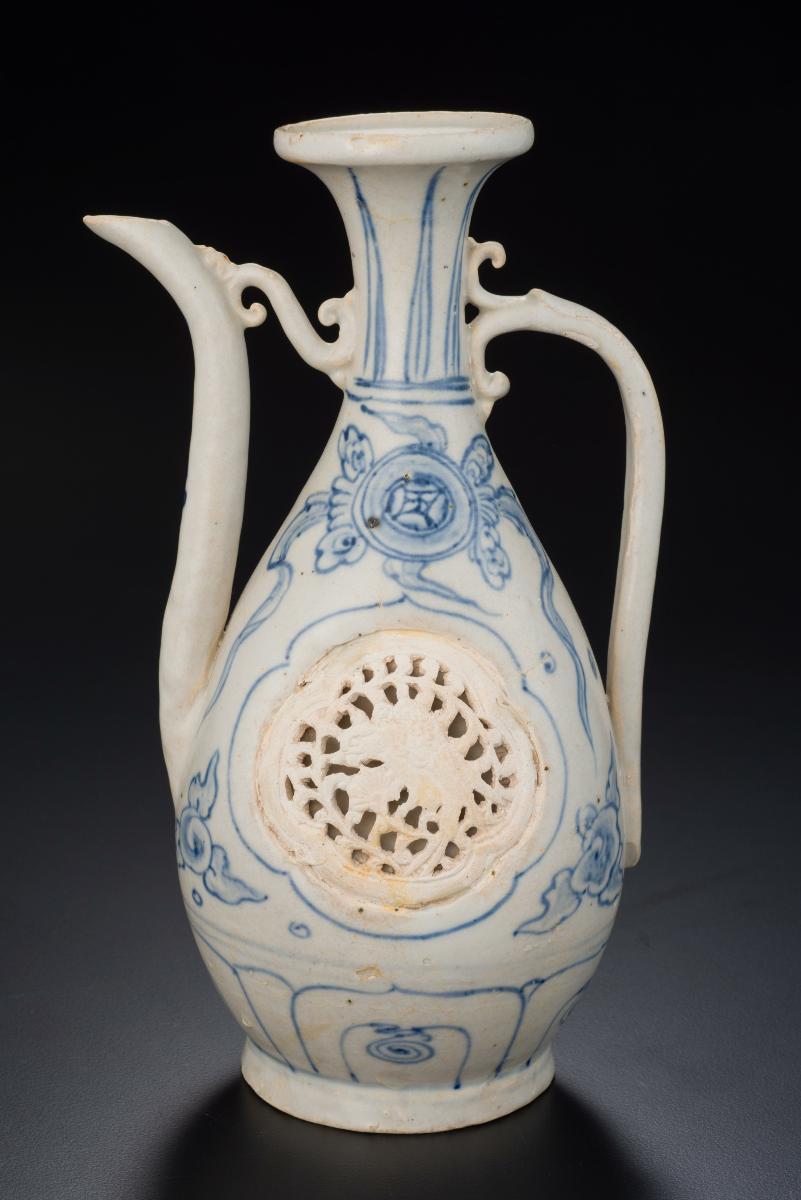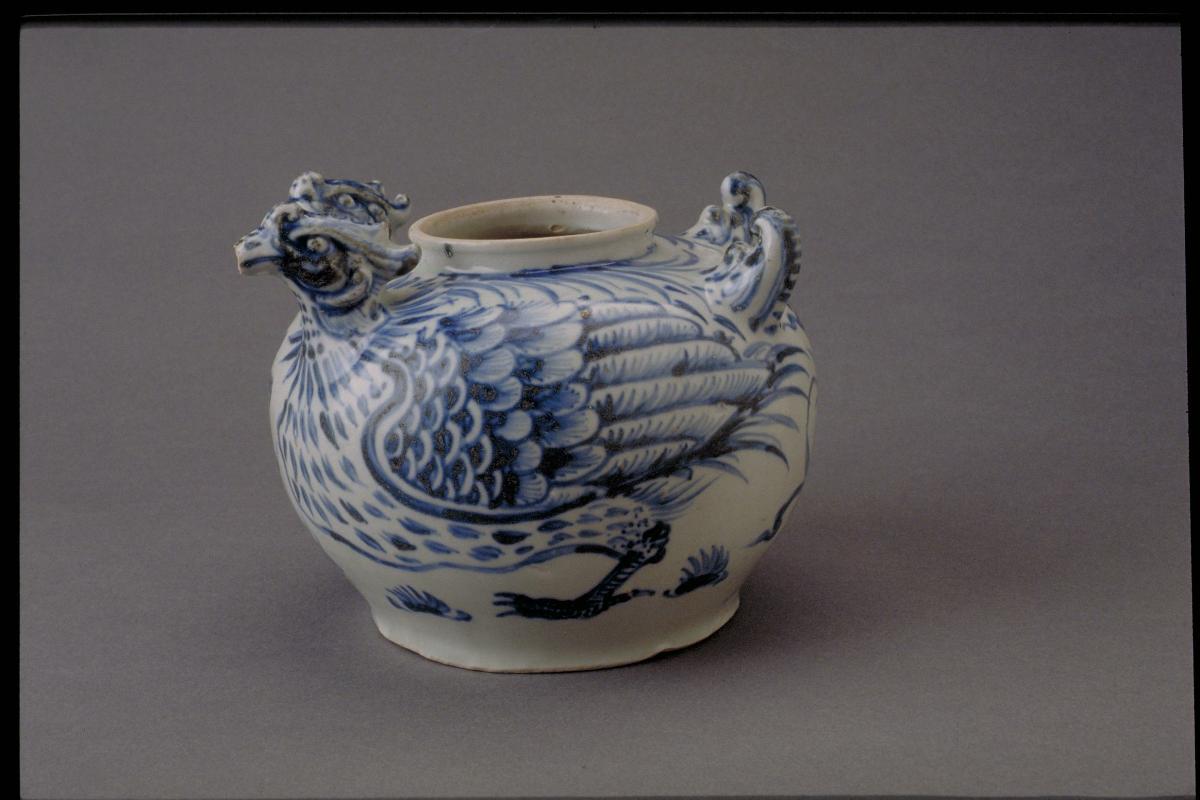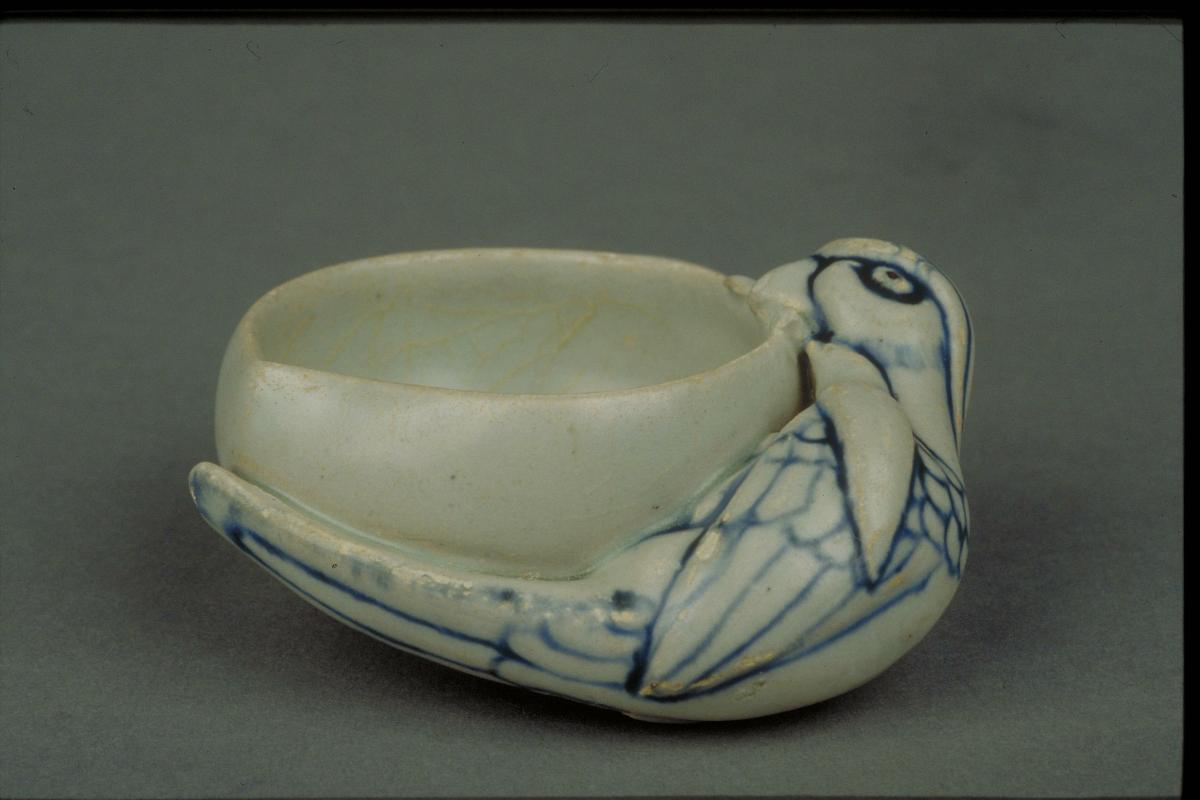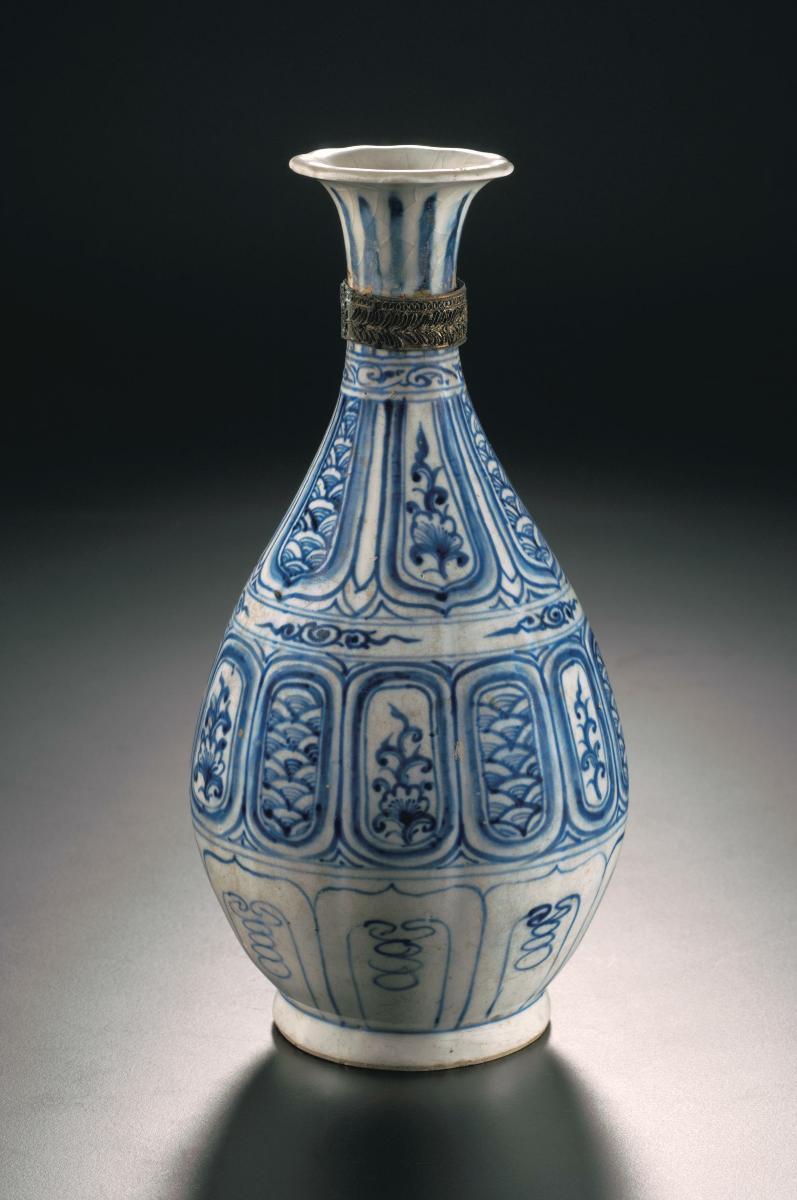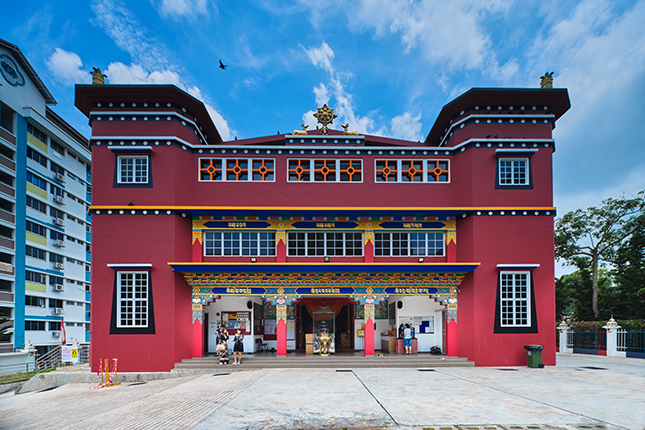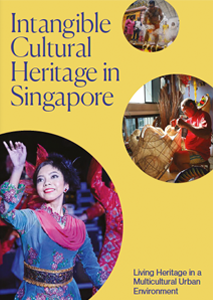This elegant pear-shaped ewer has a long spout and strap handle - a form that was probably imported from the Chinese tradition, but originally inspired by West Asian metalwork. The unglazed openwork panels at each side feature a parrot amongst foliage. The underglaze blue decoration includes a band of plantain leaves around the neck, floral and medallion-shaped motifs on the body and lotus petal panels above the foot. Although heavily influenced by the Chinese ceramic tradition, Vietnam materials and potting styles are unique. Technically not ‘porcelain’, which is translucent and pure white, these stonewares are different in appearance from Chinese and other Southeast Asian ceramics. Vietnamese wares are typically more heavily potted and have an off-white clay body. Cobalt oxide could have been imported from West Asia via China to produce the blue tones.Vietnam entered the international trade during the 14th century and produced the greatest volume and variety of wares for Southeast Asia, particularly Indonesia, the Philippines and Malaysia. Ewers such as these have been found with large quantities of blue-and-white wares in Southeast Asia, where they were exported during the 15th century.However, by the 16th century, due to intense competition from the Chinese kilns, the export of Vietnamese wares to these markets was greatly reduced.




